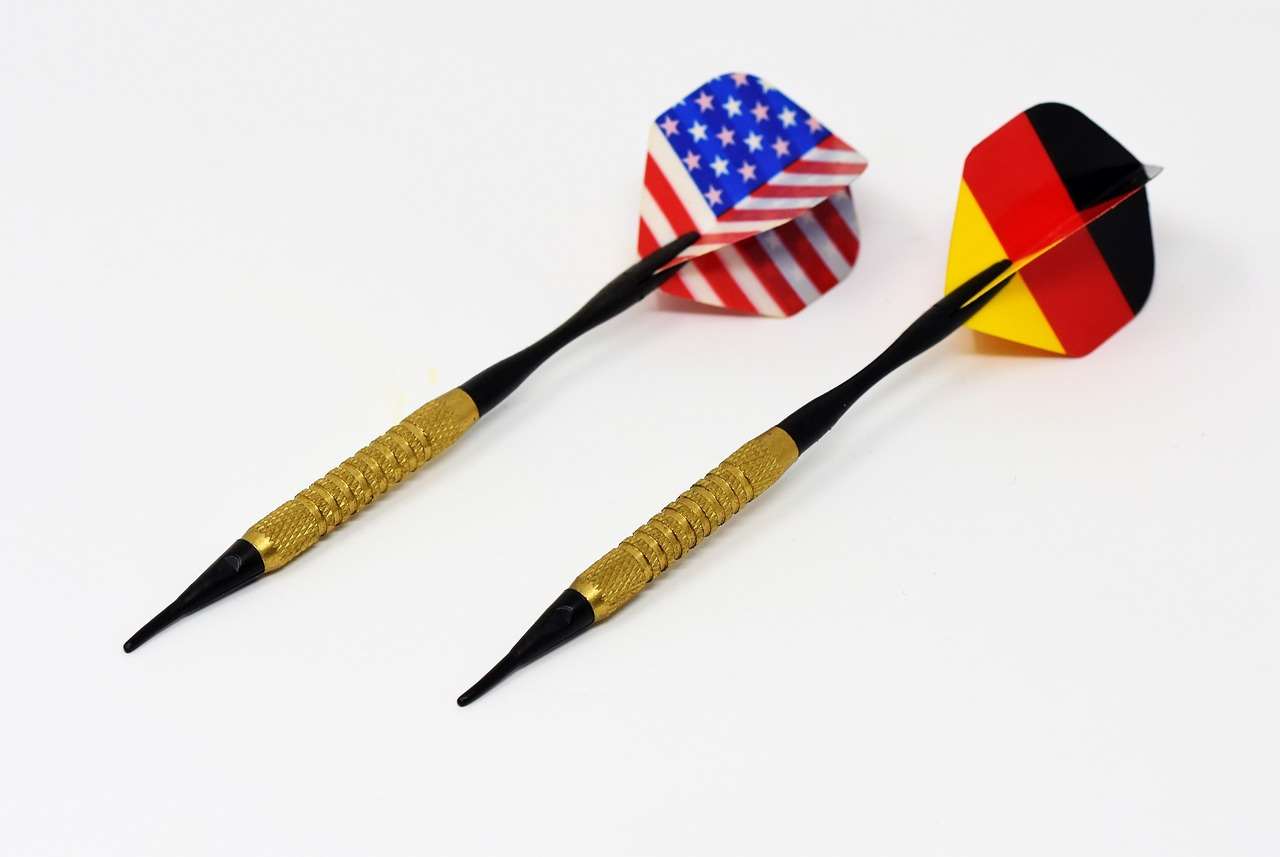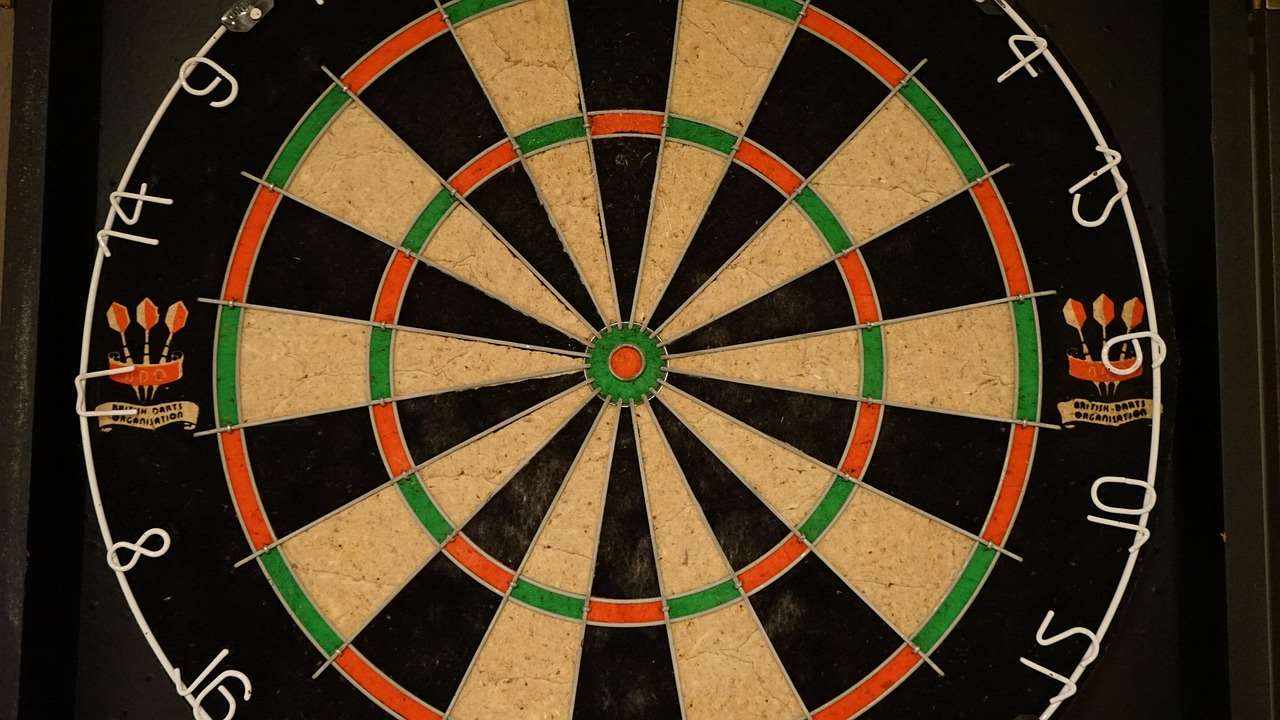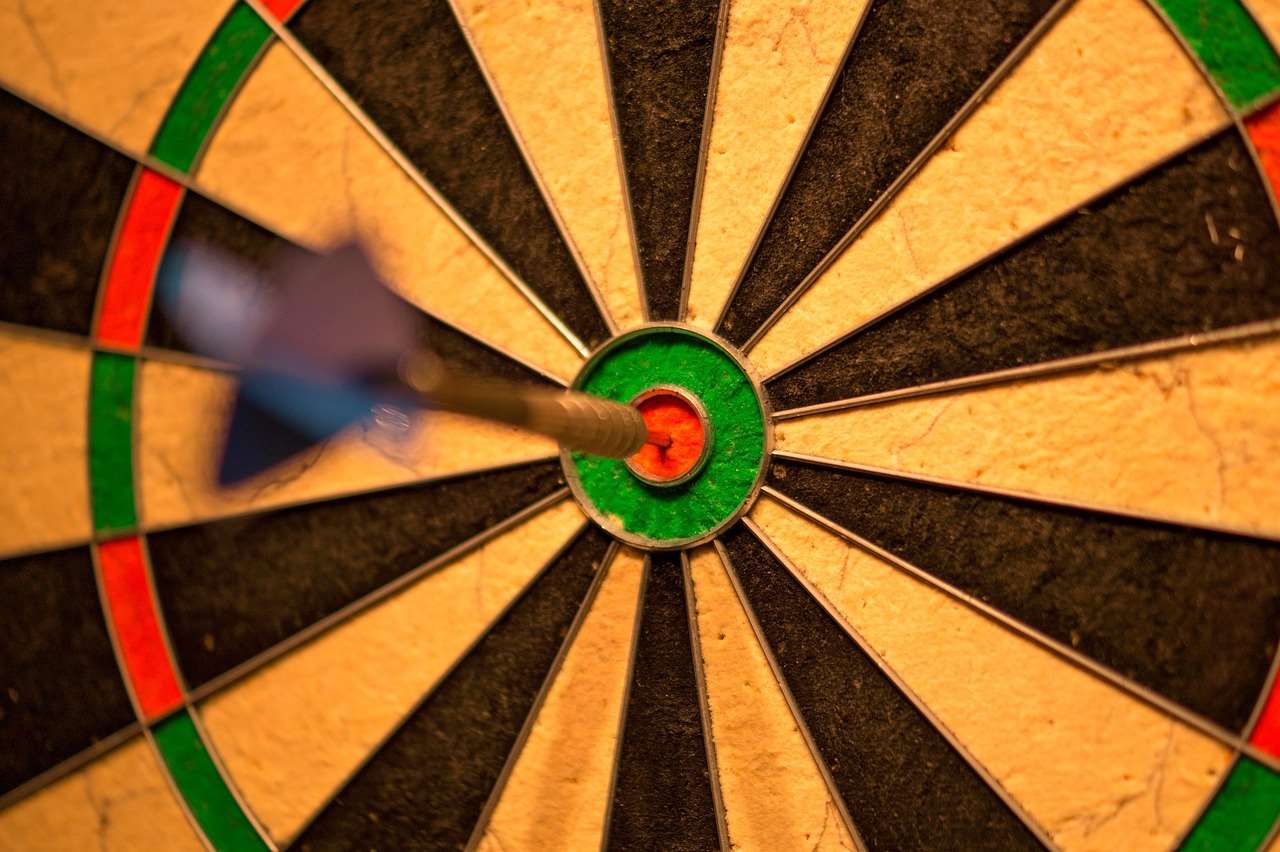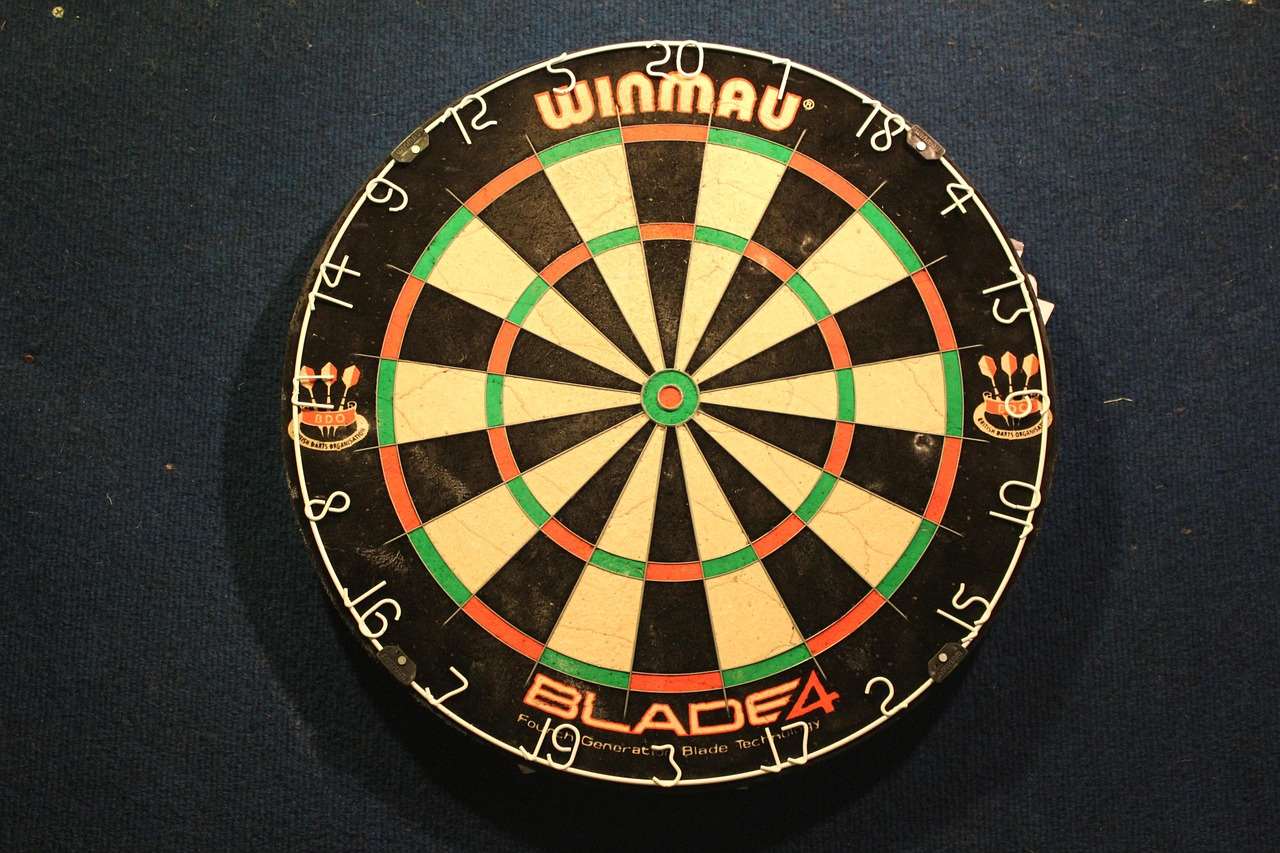In darts, a dart legs definition simply refers to a single game or round of darts that a player or team needs to win to progress in a match, typically defined by reaching a specific score, most commonly zero from a starting score like 501. This article will thoroughly explain what constitutes a leg in darts, explore the scoring system involved, and offer tips to improve your leg-winning strategies.
⚠️ Still Using Pen & Paper (or a Chalkboard)?! ⚠️
Step into the future! The Dart Counter App handles all the scoring, suggests checkouts, and tracks your stats automatically. It's easier than you think!
Try the Smart Dart Counter App FREE!Ready for an upgrade? Click above!
Understanding the Basics: What is a Dart Leg?
The term “leg” in darts is fundamental to understanding how matches are structured and won. A leg represents one complete game within a larger match. Players alternate throwing turns until one player or team successfully reduces their score to zero (usually from a starting point of 501 or 301, depending on the rules of the specific game being played). It’s crucial to understand this concept because it’s the building block of most dart competitions.
How a Leg Differs from a Set
It’s important to differentiate a leg from a set. A set is a collection of legs, typically determined by a ‘best of’ format (e.g., best of five legs). The first player to win the majority of legs in a set wins the set. Matches are then often decided by a ‘best of’ sets format, with the number of sets required to win varying depending on the tournament or competition rules. Therefore, winning individual legs is essential for winning sets, which ultimately contribute to winning the match. Understanding how dartboard numbers impact your leg strategy is helpful.
Scoring in a Dart Leg
To truly grasp the dart legs definition, it’s vital to understand how scoring works. Each player begins with a predetermined score (501 is the most common). The objective is to reduce this score to exactly zero. Here’s a breakdown of the scoring process:
- Each dart scores points: The number corresponds to the segment on the dartboard where the dart lands.
- Doubles and Trebles: Landing a dart in the outer ring doubles the score of that segment, while landing in the inner ring trebles it.
- The Bullseye: The outer bull (green ring) scores 25 points, and the inner bull (red center) scores 50 points.
- Bust: If a player’s score goes below zero, or ends on one, the throw is invalid, and the score reverts to what it was before that throw. This is called a “bust.”
- Double Out: To win a leg, the final dart thrown must be a double (or the bullseye, which counts as a double 25). This is called “double out.”
Effectively managing your score and planning your throws is crucial to winning legs. Practicing checkout combinations (the sequence of throws needed to finish a leg) is essential for any serious darts player.

Strategies for Winning More Dart Legs
While skill is paramount, employing smart strategies can significantly boost your chances of winning more legs. Here are some proven techniques:
- Master Checkout Combinations: Learn and practice common checkout routes (e.g., 170, 164, 101). Knowing these combinations allows you to plan your throws and efficiently reduce your score. There are many resources online and dart scoring apps available to help you learn these.
- Aim for Consistency: Focus on consistently hitting the treble 20 (T20), the highest scoring segment. Even if you don’t always hit the T20, consistent accuracy around that area will keep your score progressing rapidly.
- Develop a Strong First Nine Darts: Your first nine darts are crucial for setting up a manageable checkout. Aim for high scores early to put pressure on your opponent.
- Pressure Your Opponent: If you’re ahead in the leg, aim for finishes that force your opponent to respond with high scores.
- Adapt to Your Opponent: Observe your opponent’s strengths and weaknesses. Exploit their weaknesses and avoid playing into their strengths.
The Importance of Mental Toughness
Darts is as much a mental game as it is a physical one. Maintaining composure under pressure and staying focused on your target is key. Don’t let missed throws or your opponent’s success rattle you. Learn to shake off mistakes and refocus on the next throw. Visualizing successful throws can also significantly improve your confidence and performance.
Related Concepts: Calls and Terminology
Understanding darts terminology enriches your understanding of the dart legs definition. Here are a few key terms you’ll often hear:
- 180: The maximum score achievable in a single turn (three treble 20s).
- Shanghai: Hitting a single, double, and treble of the same number in one turn.
- Ton: Scoring 100 or more in a single turn.
- Game Shot: The dart that wins the leg.
Familiarizing yourself with these terms will not only help you understand commentary and discussions about darts but also improve your understanding of the game’s nuances. The use of a Dart game scoring app helps with familiarization.

Practicing for Leg Wins: Drills and Exercises
Consistent practice is essential for improving your dart game and winning more legs. Here are some effective drills and exercises:
- Around the Clock: Start at 1 and work your way around the board to 20, hitting each number with one dart. This drill improves accuracy and target acquisition.
- Checkout Practice: Set up specific checkout numbers (e.g., 40, 60, 81) and practice hitting the required doubles and combinations.
- Treble 20 Challenge: Focus solely on hitting the treble 20. See how many you can hit in a row.
- High Score Challenge: Try to score as high as possible in a set number of throws (e.g., nine darts).
Regular practice, even for short periods, will help you develop muscle memory, improve your accuracy, and boost your confidence on the oche. Consider the right darts oche for mat for your practice space.
The Role of Dart Choice
The type of darts you use can impact your performance. Experiment with different weights, barrel shapes, and flight types to find the darts that feel most comfortable and accurate for you. A well-balanced dart that suits your throwing style can significantly improve your consistency and scoring.
Tournament and Match Formats Influencing Dart Legs Definition
Different dart tournaments and match formats can influence the significance of each leg. For example, in some tournaments, legs may be played with “sudden death” rules in the event of a tie, increasing the pressure on each throw. Understanding the specific rules and format of the competition you’re participating in is crucial for adapting your strategy.

Advanced Strategies: Psychology and Game Management
Beyond technical skills, advanced players utilize psychological tactics and game management to gain an edge. This includes:
- Reading Your Opponent: Pay attention to your opponent’s body language, facial expressions, and throwing patterns. This can give you clues about their confidence level and potential strategies.
- Varying Your Pace: Changing the speed of your throws can disrupt your opponent’s rhythm and concentration.
- Strategic Bailing Out: Sometimes, it’s better to avoid a risky checkout and instead leave yourself a more manageable number for the next throw.
These subtle but effective strategies can give you a significant advantage in close matches.
Equipment Matters: Maintaining Your Darts
Properly maintaining your darts is essential for consistent performance. Clean your darts regularly to remove dirt and grime. Replace worn flights and broken shafts. A well-maintained set of darts will perform better and last longer.
The Future of Darts: Evolution and Innovation
The world of darts is constantly evolving with new technologies and innovative approaches. Electronic dartboards, advanced scoring systems, and online competitions are changing the landscape of the game. Staying informed about these developments will help you stay ahead of the curve. This is an important element of understanding the ever-changing **dart legs definition**.

The Social Aspect of Darts
While darts can be a competitive sport, it’s also a highly social activity. Playing in leagues, joining dart clubs, and attending tournaments are great ways to meet new people, improve your skills, and enjoy the camaraderie of the darts community. The social aspect of darts can make the game even more enjoyable and rewarding.
Common Mistakes to Avoid in Leg Play
Even experienced players can make mistakes that cost them legs. Here are some common pitfalls to avoid:
- Rushing Your Throws: Take your time and focus on your target. Rushing can lead to inaccurate throws and missed opportunities.
- Ignoring Your Opponent: Pay attention to what your opponent is doing and adjust your strategy accordingly.
- Chasing High Scores: Don’t always go for the treble 20. Sometimes, a more strategic throw is a better option.
- Giving Up Too Easily: Even if you’re behind in a leg, never give up. A few good throws can quickly turn the tide.
By avoiding these common mistakes, you’ll increase your chances of winning more legs and improving your overall game. The key is to learn from each game and refine your approach.

Conclusion: Mastering the Dart Leg
Understanding the dart legs definition, mastering scoring techniques, and implementing smart strategies are all crucial for success in darts. Winning legs requires a combination of skill, mental toughness, and strategic thinking. By consistently practicing, learning from your mistakes, and staying focused on your goals, you can significantly improve your leg-winning rate and elevate your game to the next level. So, grab your darts, practice those checkout combinations, and get ready to dominate the oche. Want to improve your game and learn more? Check out darts with flights attached for additional insights, and start your journey to consistent leg wins today!
Hi, I’m Dieter, and I created Dartcounter (Dartcounterapp.com). My motivation wasn’t being a darts expert – quite the opposite! When I first started playing, I loved the game but found keeping accurate scores and tracking stats difficult and distracting.
I figured I couldn’t be the only one struggling with this. So, I decided to build a solution: an easy-to-use application that everyone, no matter their experience level, could use to manage scoring effortlessly.
My goal for Dartcounter was simple: let the app handle the numbers – the scoring, the averages, the stats, even checkout suggestions – so players could focus purely on their throw and enjoying the game. It began as a way to solve my own beginner’s problem, and I’m thrilled it has grown into a helpful tool for the wider darts community.